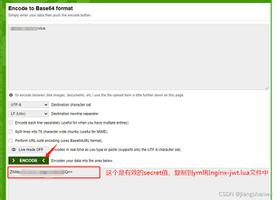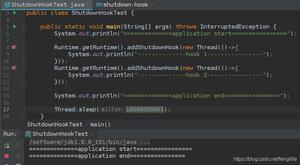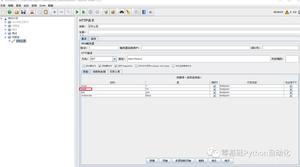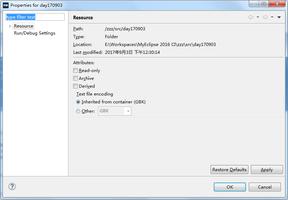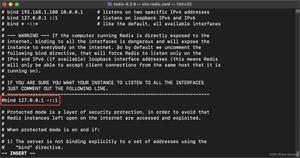React项目使用Redux

⒈创建React项目
初始化一个React项目(TypeScript环境)
⒉React集成React-Router
React项目使用React-Router
⒊React集成Redux
Redux是React中的数据状态管理库,通常来讲,它的数据流模型如图所示:
我们先将目光放到UI层。通过UI层触发Action,Action会进入Reducer层中去更新Store中的State(应用状态),最后因为State和UI进行了绑定,UI便会自动更新。
React Redux应用和普通React应用的区别在于,React将应用状态存储在了React组件内部,而React Redux应用则将应用状态存储在了Store中进行统一管理。
路由状态也是应用状态的一种,所以我们可以试验,先把路由状态存入Store中,来看一下TypeScript如何使用的,先把我们的路由和Redux进行集成。
因为Redux的库中自己带有类型定义文件,所以不需要@types/redux。
yarn add redux react-redux react-router-redux
接下来创建以下文件
src/store/history.js(type环境为history.ts)
import {createBrowserHistory} from 'history';const history = createBrowserHistory();
export default history;
src/store/index.js(type环境为index.ts)
import {routerMiddleware, routerReducer} from 'react-router-redux';import {applyMiddleware, combineReducers, createStore} from 'redux';
import history from './history';
const middleware = routerMiddleware(history);
const store = createStore(
combineReducers({
router: routerReducer,
}),
applyMiddleware(middleware),
)
export default store;
最后再绑定Store到Router组件上:
src/Router.js(type环境为Router.ts)
import {routerMiddleware, routerReducer, ConnectedRouter} from 'react-router-redux';import React from 'react';
import {Provider} from 'react-redux';
import {Route,Router} from 'react-router';
import App from './App';
import Edit from './Edit';
import store from './store';
import history from './store/history';
export default () => (
<Provider store={store}>
<ConnectedRouter history={history}>
<>
<Route exact path="/" component={App}/>
<Route path="/edit" component={Edit}/>
</>
</ConnectedRouter>
</Provider>
)
刷新页面后,你会发现没有任何变化
但如果我们再稍微修改一下,你可能就会看到一些不一样的地方了:
yarn add redux-devtools-extension
src/store/index.js(type环境为index.ts)
import {routerMiddleware, routerReducer} from 'react-router-redux';import {applyMiddleware, combineReducers, createStore} from 'redux';
import {composeWithDevTools} from 'redux-devtools-extension';
import history from './history';
const middleware = routerMiddleware(history);
const store = createStore(
combineReducers({
router: routerReducer,
}),
process.env.NODE_ENV === 'development'? composeWithDevTools(applyMiddleware(middleware)) : applyMiddleware(middleware),
)
export default store;
然后,在Chrome中安装Redux DevTools,并打开它后再刷新一次页面,你就会看到路由信息已经完全同步进入Redux Store里了。
⒋组件
虽然我们把React项目跑起来了,但我们并没有正式的书写一个组件,我们来构思一个编辑提醒事项的组件,它应该有一个确认框和一条信息
src/Edit.js(type环境为Edit.tsx)
import React,{Component} from 'react';class Edit extends Component{
render(){
return (
<div>
<div>
<input type="checkbox"/>
<input type="text"/>
</div>
<div>
<button>取消</button>
<button>确定</button>
</div>
</div>
)
}
}
export default Edit;
我们需要在用户点击“确定”的时候保存下当前的数据
可能有人会说,这很简单啊,直接加上id,然后用dom操作获取值。在React的世界中,这样做是不推荐的,我们应该尽量依靠React提供的API去解决,比如用onChange函数:
src/Edit.js(type环境为Edit.tsx)
import React,{ChangeEventHandler, Component} from 'react';import { Interface } from 'readline';
interface IState{
isChecked: Boolean,
content: string,
}
class Edit extends Component{
state: IState = {
isChecked: false,
content: '',
}
onCheckboxValueChange: ChangeEventHandler<HTMLInputElement> = e => {
this.setState({
isChecked: e.target.checked,
})
}
onContentValueChange: ChangeEventHandler<HTMLInputElement> = e => {
this.setState({
content: e.target.value;
})
}
onSave = () => {
console.log(this.state);
}
render(){
return (
<div>
<div>
<input type="checkbox" checked={this.state.isChecked} onChange={this.onCheckboxValueChange}/>
<input type="text" value={this.state.content} onChange={this.onContentValueChange}/>
</div>
<div>
<button>取消</button>
<button onClick={this.onSave}>确定</button>
</div>
</div>
)
}
}
export default Edit;
这样就完成了一个可以工作的组件,初步保证了数据在内部的存储,也可以在onSave中扩展网络请求API。
但如果我文字写到一半,没保存,只是刷新一下页面,那所有的数据就没有了。接下来,我们可以看一下Redux全局统筹的魔力。
⒌Redux组件
一个Redux组件需要触发Action以及根据Action操作数据的Reducer,同时,我们还需要增加一些全局的类型定义。
首先,我们需要将redux-tools里面所看到的Redux Store的类型给定义出来:
src/typings/store.d.ts
declare interface IDraftState{ isChecked: boolean,
content: string,
}
declare interface IStoreState{
route:{
location: Location
}
draft: IDraftState
}
然后是Action
src/action/index.ts
export const EDIT_DRAFT_ACTION_TYPE = 'draft/edit';export const editDraftAction = (payload: IDraftState) => ({
type: EDIT_DRAFT_ACTION_TYPE,
payload,
})
再然后是创建draft的Reducer:
src/reducer/draft.ts
import {editDraftAction,EDIT_DRAFT_ACTION_TYPE} from '../action';const defaultState: IDraftState = {
isChecked: false,
content: '',
}
export default (state = defaultState,action: ReturnType<typeof editDraftAction>) => {
switch(action.type){
case EDIT_DRAFT_ACTION_TYPE:{
return action.payload
}
default:{
return state
}
}
}
这里需要把Reducer文件引入到Store中:
src/reducer/index.ts
import draft from './draft';export default{
draft,
}
src/store/index.ts
import {routerMiddleware, routerReducer} from 'react-router-redux';import {applyMiddleware, combineReducers, createStore} from 'redux';
import {composeWithDevTools} from 'redux-devtools-extension';
import reducers from '../reducer';
import history from './history';
const middleware = routerMiddleware(history);
const store = createStore(
combineReducers({
...reducers,
router: routerReducer,
}),
process.env.NODE_ENV === 'development'? composeWithDevTools(applyMiddleware(middleware)) : applyMiddleware(middleware),
)
export default store;
准备工作完成后,就可以将组件与Redux进行关联了
src/Edit.ts
import React,{ChangeEventHandler, Component} from 'react';import {connect} from 'react-redux';
import { editDraftAction } from './action/index';
const mapStateToProps = (storeState: IStoreState) => ({
draft: storeState.draft,
})
type IStateProps = ReturnType<typeof mapStateToProps>
const mapDispatchToProps = {
editDraftAction,
}
type IDispatchProps = typeof mapDispatchToProps;
type IProps = IStateProps & IDispatchProps;
class Edit extends Component<IProps>{
onCheckboxValueChange: ChangeEventHandler<HTMLInputElement> = e => {
this.props.editDraftAction({
...this.props.draft,
isChecked:e.target.checked,
})
}
onContentValueChange: ChangeEventHandler<HTMLInputElement> = e => {
this.props.editDraftAction({
...this.props.draft,
content:e.target.value,
})
}
onSave = () => {
console.log(this.state);
}
render(){
return (
<div>
<div>
<input type="checkbox" checked={this.props.draft.isChecked} onChange={this.onCheckboxValueChange}/>
<input type="text" value={this.props.draft.content} onChange={this.onContentValueChange}/>
</div>
<div>
<button>取消</button>
<button onClick={this.onSave}>确定</button>
</div>
</div>
)
}
}
export default connect<IStateProps,IDispatchProps>(mapStateToProps,mapDispatchToProps)(Edit);
这个时候我在编辑框中输入文字或者修改CheckBox的状态,都会同步进入Store里面。
但是一刷新页面,数据还是没有。接下来我们来解决这个问题。
⒍Redux Persist
既然我们的全部数据已经存入了Store中,那么只需要为Store增加一个缓存层就完工了,因此介绍Redux Persist。
Redux Persist的架构如图所示,这也是一个Store内部的微观结构图
如果有一个Action进入的话,它会先穿过最底下的中间件,再穿过Reducer,最后改变State。
但在加入Redux Persist后,Redux Persist会对改变后的State进行一次存操作,默认是写入LocalStorge。当然这个存储位置是可以改变的。
另外在初始化Redux Store的时候,Redux Persist还会默认对LocalStorge进行一次读取操作,这样就能保证网页数据的持久性了。
现在,先看一下如何集成redux-persist吧:
yarn add redux-persist
src/store/index.ts
import {routerMiddleware, routerReducer} from 'react-router-redux';import {applyMiddleware, combineReducers, createStore} from 'redux';
import {composeWithDevTools} from 'redux-devtools-extension';
import {persistReducer,persistStore,PersistConfig} from 'redux-persist';
import storage from 'redux-persist/es/storage';
import reducers from '../reducer';
import history from './history';
const middleware = routerMiddleware(history);
const rootReducer = combineReducers({
...reducers,
router: routerReducer,
})
const persistConfig: PersistConfig = {
key: 'root',
storage,
whitelist: ['draft'],
}
const persistedReducer: typeof rootReducer = persistedReducer(PersistConfig,rootReducer);
const store = createStore(
persistedReducer,
process.env.NODE_ENV === 'development'? composeWithDevTools(applyMiddleware(middleware)) : applyMiddleware(middleware),
)
const persistor = persistStore(store);
export{
store,
persistor,
}
src/Router.tsx
import {routerMiddleware, routerReducer, ConnectedRouter} from 'react-router-redux';import React from 'react';
import {Provider} from 'react-redux';
import {Route,Router} from 'react-router';
import {PersistGate} from 'redux-persist/integration/react';
import App from './App';
import Edit from './Edit';
import store, { persistor } from './store';
import history from './store/history';
export default () => (
<Provider store={store}>
<PersistGate loading={null} persistor={persistor}>
<ConnectedRouter history={history}>
<>
<Route exact path="/" component={App}/>
<Route path="/edit" component={Edit}/>
</>
</ConnectedRouter>
</PersistGate>
</Provider>
)
在输入文字,再刷新,你就会发现数据能从缓存中读出来了。这样,我们就利用了Redux实现了数据持久化,接下来我们只需要扩展它的网络层即可。
⒎处理网络请求
接下来只需在Redux上做文章,就可以轻松兼容网络层了,由于组件只负责发出Action,所以后面的操作完全跟组件解耦。
组件在保存的时候发出Save的Action,然后将草稿清空:
src/action/index.ts
export const EDIT_DRAFT_ACTION_TYPE = 'draft/edit';export const editDraftAction = (payload: IDraftState) => ({
type: EDIT_DRAFT_ACTION_TYPE,
payload,
})
export const SAVE_DRAFT_ACTION_TYPE = 'draft/save';
export const saveDraftAction = () => ({
type: SAVE_DRAFT_ACTION_TYPE,
})
export const RESET_DRAFT_ACTION_TYPE = 'draft/reset';
export const resetDraftAction = () => ({
type:RESET_DRAFT_ACTION_TYPE
})
src/reducer/draft.ts
import {editDraftAction,resetDraftAction,EDIT_DRAFT_ACTION_TYPE} from '../action';import {RESET_DRAFT_ACTION_TYPE} from '../action/index';
const defaultState: IDraftState = {
isChecked: false,
content: '',
}
type actionType = ReturnType<typeof editDraftAction> | ReturnType<typeof resetDraftAction>
export default (state = defaultState,action: actionType) => {
switch(action.type){
case EDIT_DRAFT_ACTION_TYPE:{
return (action as ReturnType<typeof editDraftAction>).payload
}
case RESET_DRAFT_ACTION_TYPE:{
return defaultStatus
}
default:{
return state
}
}
}
src/Edit.tsx
import React,{ChangeEventHandler, Component} from 'react';import {connect} from 'react-redux';
import { editDraftAction,saveDraftAction } from './action/index';
const mapStateToProps = (storeState: IStoreState) => ({
draft: storeState.draft,
})
type IStateProps = ReturnType<typeof mapStateToProps>
const mapDispatchToProps = {
editDraftAction,
saveDraftAction,
}
type IDispatchProps = typeof mapDispatchToProps;
type IProps = IStateProps & IDispatchProps;
class Edit extends Component<IProps>{
onCheckboxValueChange: ChangeEventHandler<HTMLInputElement> = e => {
this.props.editDraftAction({
...this.props.draft,
isChecked:e.target.checked,
})
}
onContentValueChange: ChangeEventHandler<HTMLInputElement> = e => {
this.props.editDraftAction({
...this.props.draft,
content:e.target.value,
})
}
onSave = () => {
this.props.saveDraftAction()
}
render(){
return (
<div>
<div>
<input type="checkbox" checked={this.props.draft.isChecked} onChange={this.onCheckboxValueChange}/>
<input type="text" value={this.props.draft.content} onChange={this.onContentValueChange}/>
</div>
<div>
<button>取消</button>
<button onClick={this.onSave}>确定</button>
</div>
</div>
)
}
}
export default connect<IStateProps,IDispatchProps>(mapStateToProps,mapDispatchToProps)(Edit);
网络请求的过程是异步的,我们需要引入一个库来处理异步Action,在这里我们选择了Redux Thunk来进行处理,如下图所示:
在Redux Thunk中可以获取整个Store的State,同时分发一个新的Action出去:
yarn add redux-thunk
src/store/index.ts
import {routerMiddleware, routerReducer} from 'react-router-redux';import {applyMiddleware, combineReducers, createStore} from 'redux';
import {composeWithDevTools} from 'redux-devtools-extension';
import {persistReducer,persistStore,PersistConfig} from 'redux-persist';
import storage from 'redux-persist/es/storage';
import thunk from 'redux-thunk';
import reducers from '../reducer';
import history from './history';
const middleware = [thunk,routerMiddleware(history)];
const rootReducer = combineReducers({
...reducers,
router: routerReducer,
})
const persistConfig: PersistConfig = {
key: 'root',
storage,
whitelist: ['draft'],
}
const persistedReducer: typeof rootReducer = persistedReducer(PersistConfig,rootReducer);
const store = createStore(
persistedReducer,
process.env.NODE_ENV === 'development'? composeWithDevTools(applyMiddleware(...middleware)) : applyMiddleware(...middleware),
)
const persistor = persistStore(store);
export{
store,
persistor,
}
由于当前域是localhost:3000,而API服务器是运行在localhost:3001,所以我们还需要配置一下代理:
package.json(部分)
"proxy": { "/work-items":{
"target": "http://localhost:3001"
}
},
准备工作都完成了,接下来就开始改造 saveDraftAction:
import {ThunkAction} from 'redux-thunk';const headers = new Headers({
'content-type':'application/json'
})
export const saveDraftAction = (): ThunkAction<void,IStoreState,undefined> => {
(dispatch,getState) => {
const draft = getState().draft
fetch('http://localhost:3000/work-items',{
headers,
method:'post',
body:JSON.stringify(draft)
}).then(() => {
dispatch(resetDraftAction())
})
}
}
saveDraftAction作为一个异步Action,是不用写入Reducer里去改变State,在完成自己的工作后,再去触发别的Action就行了。
在这里,我们还希望保存成功后再回到首页,那么只需要调用react-router已经写好的push action就好了:
import {push} from 'react-router-redux';import {ThunkAction} from 'redux-thunk';
const headers = new Headers({
'content-type':'application/json'
})
export const saveDraftAction = (): ThunkAction<void,IStoreState,undefined> => {
(dispatch,getState) => {
const draft = getState().draft
fetch('http://localhost:3000/work-items',{
headers,
method:'post',
body:JSON.stringify(draft)
}).then(() => {
dispatch(push('/'))
dispatch(resetDraftAction())
})
}
}
这样,UI和业务就完全进行解耦了,仅仅靠Action维持联系。
⒏实现列表
既然可以创建提醒事项,那么接下来就可以正式渲染列表了。
8.1实现列表页
我们先来思考一下,完成列表页有哪些工作,我们需要获取数据,数据会存放到Store里去,然后组件连接Store取值,那么就先需要在store.d.ts中添加新的list的定义,然后写Action、Reducer,然后再是组件:
src/typings/store.d.ts
declare interface IDraftState{ isChecked: boolean,
content: string,
}
declare type IList = IDraftState[]
declare interface IStoreState{
route:{
location: Location
}
draft: IDraftState
list:IList
}
src/action/index.ts
export const fetchList = (): ThunkAction<void,IStoreState,undefined> =>async(dispatch) => {
const response = await fetch('http://localhost:3000/work-item',{headers})
const data = await response.json()
dispatch(fetchListSuccess(data))
}
export const FETCH_LIST_SUCCESS_TYPE = 'list/success'
export const fetchListSuccess = (payload: IList) => ({
type: FETCH_LIST_SUCCESS_TYPE,
payload,
})
src/reducer/list.ts
import {fetchListSuccess,FETCH_LIST_SUCCESS_TYPE} from '../action/index';const defaultState:IList = []
type actionType = ReturnType<typeof fetchListSuccess>
export default (state = defaultStatus,action: actionType) => {
switch(action.type){
case FETCH_LIST_SUCCESS_TYPE:{
return action.payload
}
default:{
return state
}
}
}
最后再修改一下App.tsx的样式
src/App.tsx
import React,{Component} from 'react';import './App.css';
import logo from './logo.svg';
import {fetchList} from './action/index';
import {connect} from 'react-redux';
const mapStateToProps = (storeState: IStoreState) => ({
list: storeState.list,
})
type IStoreState = ReturnType<typeof mapStateToProps>
const mapDispatchToProps = {
fetchList,
}
type IDispatchProps = typeof mapDispatchToProps
type IProps = IStateProps & IDispatchProps
class App extends Component<IProps>{
componentDidMount(){
this.props.fetchList()
}
render(){
return (
<div>
<header className="App-header">
<img src={logo} className="App-logo" alt="logo" />
<h1 className="App-title">Welcome to Check List</h1>
</header>
<ul>
{this.props.list.map((item) => {
<li>{item.isChecked ? '完成' : '未完成'} - {item.content}</li>
})}
</ul>
</div>
)
}
}
extends default connect<IStateProps,IDispatchProps>(mapStateToProps,mapDispatchToProps)(App)
这里有个新的问题,如果我想点击列表的某一项直接进行编辑呢?
8.2复用编辑组件
因为后端代码也是我们自己编写的,所以我们知道,创建一个数据的时候,它是没有主键ID的,而更新删除的时候是有主键ID的。所以我们可以通过是否有主键ID来区分路由,从两个不同的路由渲染同一个组件,然后再在内部做一些业务上的区分。
那么,根据主键ID的设定,我们需要先更新一下store.d.ts:
src//typings/store.d.ts
declare interface IDraftState{ id?: number,
isChecked: boolean,
content: string,
}
declare type IList = IDraftState[]
declare interface IStoreState{
route:{
location: Location
}
draft: IDraftState
list:IList
}
然后更新路由
src/Router.tsx
import {routerMiddleware, routerReducer, ConnectedRouter} from 'react-router-redux';import React from 'react';
import {Provider} from 'react-redux';
import {Route,Router} from 'react-router';
import {PersistGate} from 'redux-persist/integration/react';
import App from './App';
import Edit from './Edit';
import store, { persistor } from './store';
import history from './store/history';
export default () => (
<Provider store={store}>
<PersistGate loading={null} persistor={persistor}>
<ConnectedRouter history={history}>
<>
<Route exact path="/" component={App}/>
<Route path="/edit/new" component={Edit}/>
<Route path="/edit/:id" component={Edit}/>
</>
</ConnectedRouter>
</PersistGate>
</Provider>
)
为单个item添加点击事件:
src/App.tsx
import React,{Component} from 'react';import './App.css';
import logo from './logo.svg';
import {fetchList} from './action/index';
import {connect} from 'react-redux';
import {push} from 'react-router-redux';
const mapStateToProps = (storeState: IStoreState) => ({
list: storeState.list,
})
type IStoreState = ReturnType<typeof mapStateToProps>
const mapDispatchToProps = {
fetchList,
push,
}
type IDispatchProps = typeof mapDispatchToProps
type IProps = IStateProps & IDispatchProps
class App extends Component<IProps>{
componentDidMount(){
this.props.fetchList()
}
navigateToEditor = (id?: number) => () => this.props.push(`/edit/${id}`)
render(){
return (
<div className="App">
<header className="App-header">
<img src={logo} className="App-logo" alt="logo" />
<h1 className="App-title">Welcome to Check List</h1>
</header>
<ul>
{this.props.list.map((item) => {
<li onClick={this.navigateToEditor(item.id)}>{item.isChecked ? '完成' : '未完成'} - {item.content}</li>
})}
</ul>
</div>
)
}
}
extends default connect<IStateProps,IDispatchProps>(mapStateToProps,mapDispatchToProps)(App)
但跳转过去后,发现内容都是空的
那么我们能不能直接去读本地的存储呢?答案是可以,但不能完全只读本地存储,因为如果直接访问这个地址,就没有本地存储可读了。
所以最稳妥的方法是发一次API拉取一次数据。我们要考虑如何最省力地去设计,以便减少修改代码的工作
毫无疑问,凡是进入编辑页面,都是我们希望能保存的。所以这里的编辑也不例外,我们的draft需要改造成一个字典,那么,创建的内容可以放在一个特殊关键字里面。这样修改的量可以达到最小。
src/typings/store.d.ts
declare interface IDraftState{ id?: number,
isChecked: boolean,
content: string,
}
declare type IList = IDraftState[]
declare interface IStoreState{
route:{
location: Location
}
draft: {
[id:number] :IDraftState
}
list:IList
}
src/action/index.ts
import {push} from 'react-router-redux';import { ThunkAction } from "redux-thunk";
import {NEW_DRAFT_SYMBOL} from '../reducer/draft';
export const EDIT_DRAFT_ACTION_TYPE = 'draft/edit';
export const editDraftAction = (payload: IDraftState) => ({
type: EDIT_DRAFT_ACTION_TYPE,
payload,
})
const headers = new Headers({
'content-type':'application/json'
})
export const saveDraftAction = (id:number): ThunkAction<void,IStoreState,undefined> => {
(dispatch,getState) => {
const draft = getState().draft[id]
if(id === NEW_DRAFT_SYMBOL){
fetch('http://localhost:3000/work-items',{
headers,
method:'post',
body:JSON.stringify(draft)
}).then(() => {
dispatch(push('/'))
dispatch(resetDraftAction(id))
})
}else{
fetch(`http://localhost:3000/work-items/${id}`,{
headers,
method:'put',
body:JSON.stringify(draft)
}).then(() => {
dispatch(push('/'))
dispatch(resetDraftAction(id))
})
}
}
}
export const SAVE_DRAFT_ACTION_TYPE = 'draft/save';
export const saveDraftAction = () => ({
type: SAVE_DRAFT_ACTION_TYPE,
})
export const RESET_DRAFT_ACTION_TYPE = 'draft/reset';
export const resetDraftAction = (id:number) => ({
type:RESET_DRAFT_ACTION_TYPE,
payload:{
id,
}
})
export const fetchList = (): ThunkAction<void,IStoreState,undefined> =>
async(dispatch) => {
const response = await fetch('http://localhost:3000/work-item',{headers})
const data = await response.json()
dispatch(fetchListSuccess(data))
}
export const FETCH_LIST_SUCCESS_TYPE = 'list/success'
export const fetchListSuccess = (payload: IList) => ({
type: FETCH_LIST_SUCCESS_TYPE,
payload,
})
export const fetchItemById = (id:number): ThunkAction<void,IStoreState,undefined> =>
async(dispatch) => {
const response = await fetch(`http://localhost:3000/work-item/${id}`,{headers})
const data =await response.json();
dispatch(editDraftAction(data))
}
src/reducer/draft.ts
import {editDraftAction,resetDraftAction,EDIT_DRAFT_ACTION_TYPE} from '../action';import {RESET_DRAFT_ACTION_TYPE} from '../action/index';
const defaultState: IDraftState = {
isChecked: false,
content: '',
}
import {editDraftAction,resetDraftAction,EDIT_DRAFT_ACTION_TYPE} from '../action';
import {RESET_DRAFT_ACTION_TYPE} from '../action/index';
export const NEW_DRAFT_SYMBOL = -1
const defaultState: IDraftState = {
id: NEW_DRAFT_SYMBOL,
isChecked: false,
content: '',
}
type actionType = ReturnType<typeof editDraftAction> | ReturnType<typeof resetDraftAction>
export default (state = defaultState,action: actionType) => {
switch(action.type){
case EDIT_DRAFT_ACTION_TYPE:{
return{
...state,
[action.payload.id]: action.payload
}
}
case RESET_DRAFT_ACTION_TYPE:{
return {
...state,
[action.payload.id]: defaultState,
}
}
default:{
return state
}
}
}
src/Edit.ts
import React,{ChangeEventHandler, Component} from 'react';import {connect} from 'react-redux';
import {RouteComponentProps} from 'react-router';
import { editDraftAction, fetchItemById,saveDraftAction } from './action/index';
import {NEW_DRAFT_SYMBOL} from './reducer/draft';
const mapStateToProps = (storeState: IStoreState) => ({
draft: storeState.draft,
})
type IStateProps = ReturnType<typeof mapStateToProps>
const mapDispatchToProps = {
editDraftAction,
saveDraftAction,
fetchItemById,
}
type IDispatchProps = typeof mapDispatchToProps;
type IProps = IStateProps & IDispatchProps & RouteComponentProps<{id?:number}>;
class Edit extends Component<IProps>{
get draft(){
return this.props.draft[this.props.match.params.id || NEW_DRAFT_SYMBOL]
}
componentDidMount(){
if(this.props.match.params.id){
this.props.fetchItemById(this.props.match.params.id)
}
}
onCheckboxValueChange: ChangeEventHandler<HTMLInputElement> = e => {
this.props.editDraftAction({
...this.props.draft,
isChecked:e.target.checked,
})
}
onContentValueChange: ChangeEventHandler<HTMLInputElement> = e => {
this.props.editDraftAction({
...this.props.draft,
content:e.target.value,
})
}
onSave = () => {
this.props.saveDraftAction(this.draft.id)
}
render(){
const draft = this.draft
if(!draft){
return null
}
return (
<div>
<div>
<input type="checkbox" checked={draft.isChecked} onChange={this.onCheckboxValueChange}/>
<input type="text" value={draft.content} onChange={this.onContentValueChange}/>
</div>
<div>
<button>取消</button>
<button onClick={this.onSave}>确定</button>
</div>
</div>
)
}
}
export default connect<IStateProps,IDispatchProps>(mapStateToProps,mapDispatchToProps)(Edit);
这样,我们就能最大限度的复用了组件
⒐测试
在React的开发中,测试是必不可少的一环。
9.1配置Jest
先安装依赖
yarn add ts-jest @types/ts-jest sinon @types/sinon enzyme @types/enzyme enzyme-adapter-react-16 jest-enzyme jest-fetch-mock raf
在package.json中添加配置
"jest":{ "setupFiles":[
"<rootDir>/_mocks_/setupJest.js"
],
"setupTestFrameworkScriptFile":"./node_modules/jest-enzyme/lib/index.js",
"moduleNameMapper":{
"\\.(css|less)$":"<rootDir>/_mocks_/styleMock.js",
"\\.(gif|ttf|eot|svg)$":"<rootDir>/_mocks_/fileMock.js"
},
"unmockedModulePathPatterns":[
"react",
"enzyme",
"jest-enzyme"
],
"transform":{
"^.+\\.tsx?$":"ts-jest"
},
"testRegex":"(/_tests_/.*|(\\.|/)(test|spec))\\.(jsx?|tsx?)$",
"moduleFileExtensions":[
"ts",
"tsx",
"js",
"jsx",
"json",
"node"
]
},
这样,配置就完成了
在根目录下新建这三个文件
fileMock.js
module.exports = 'test-file-stub';
styleMock.js
module.exports = {};setupJest.js
//React also depends on requestAnimationFrame(even in test environments)//You can use the raf package to shim requestAnimationFrame
require('raf/polyfill')
//mock fetct
global.fetch = require('jest-fetch-mock')
const Adapter = require('enzyme-adapter-react-16')
require('enzyme').configure({adapter:new Adapter()});
一切准备就绪后,就可以开始了
9.2组件的测试
以App.tsx为例进行测试,一般进行组件测试的话,不需要去测试已经连接了Store的组件,那没有意义,只需要测试组件本身即可,所以先将App组件进行export操作:
export class App extends Component<IProps>{然后新建一个文件名为App.test.tsx,模拟组件渲染
import {shallow} from 'enzyme';import React from 'react';
import {App} from './App';
describe('App Component Test Suits',() => {
it('renders<App /> components with empty array' () => {
const fetchList = jest.fn()
const push = jest.fn()
const wrapper = shallow(<App list={[]} fetchList={fetchList} push={push}/>)
wrapper.rander()
})
})
然后运行
yarn jest --watch
会根据文件的变化实时重跑测试
我们再给一个有数据的数据试一下
import {shallow} from 'enzyme';import React from 'react';
import {App} from './App';
const isChecked = () => Math.random() >= 0.5
describe('App Component Test Suits',() => {
it('renders<App /> components with empty array' () => {
const fetchList = jest.fn()
const push = jest.fn()
const wrapper = shallow(<App list={[]} fetchList={fetchList} push={push}/>)
wrapper.rander()
})
it('renders <App /> components with array',() => {
const fetchList = jest.fn()
const push = jest.fn()
const list = [
{id:Math.random(),content:Math.random.toString(),isChecked:isChecked()},
{id:Math.random(),content:Math.random.toString(),isChecked:isChecked()},
]
const wrapper = shallow(<App list={[]} fetchList={fetchList} push={push}/>)
wrapper.rander()
})
})
但仅仅渲染成功还不能满足我们的要求,我们希望列表渲染的文字也能符合要求,所以可以稍微再扩展一下:
wrapper.render()wrapper.find('li').forEach((element,index) => {
const item = list[index]
expect(element.text()).toBe(`${item.isChecked?'完成':'未完成'} - ${item.content}`)
})
接下来需要测试一下点击事件:
it('li should be call by clicked', () => { const fetchList = jest.fn()
const push = jest.fn()
const list = [
{id:Math.random(),content:Math.random.toString(),isChecked:isChecked()},
{id:Math.random(),content:Math.random.toString(),isChecked:isChecked()},
]
const wrapper = shallow(<App list={[]} fetchList={fetchList} push={push}/>)
wrapper.render()
wrapper.find('li').first().simulate('click')
expect(push.mock.calls.length).toBe(1)
})
最后再测试一下生命周期
it('fetchList should be call on did mount', () => { const fetchList = jest.fn()
const push = jest.fn()
mount(<App list={[]} fetchList={fetchList} push={push}/>)
expect(fetchList.mock.calls.length).toBe(1)
})
由于异步请求都由redux-thunk接管了,所以组件的测试就显得非常容易了。
9.3Action的测试
同样,我们到Action的目录下新建文件action.test.ts
先测试一个普通的Action:
import {editDraftAction} from '.';const isChecked = () => Math.random() >= 0.5
describe('Action Test Suits',() => {
it('test editDraftAction',() => {
const payload = {id:Math.random(),content:Math.random().toString(),isChecked:isChecked()}
expect(editDraftAction(payload)).toEqual({payload,type:'draft/edit'})
})
})
一个普通的Action就是一个普通的函数,非常容易测试。
但是redux-thunk的异步Action就不容易测试了,需要我们引入一个假的Store来模拟Action在Atore里的情况。
yarn add redux-mock-store @types/redux-mock-store
import fetch from 'jest-fetch-mock';import createMockStore from 'redux-mock-store';
import thunk from 'redux-thunk';
import {editDraftAction} from '.';
import {fetchList,fetchListSuccess} from './index';
const isChecked = () => Math.random() >= 0.5
const middlewares = [thunk]
const mockStore = createMockStore(middlewares)
describe('Action Test Suits',() => {
beforeEach(() => {
fetch.resetMocks()
})
it('test editDraftAction',() => {
const payload = {id:Math.random(),content:Math.random().toString(),isChecked:isChecked()}
expect(editDraftAction(payload)).toEqual({payload,type:'draft/edit'})
})
it('test fetchLisst',async () => {
const response = [{id:Math.random(),content:Math.random().toString(),isChecked:isChecked()}]
fetch.mockResponseOnce(JSON.stringify(response))
const store = mockStore({})
//tslint:disable-next-line:no-any
await store.dispatch(fetchList() as any)
expect(store.getActions()).toEqual([fetchListSuccess(response)])
})
})
整个测试相对复杂一些,需要考虑异步的次数,还有从mock的Store中进行Action操作。
9.4Reducer的操作
在list.ts旁新建list.test.ts文件
Reducer本身也是一个函数,所以测试方法与Action类似:
import {fetchListSuccess} from '../action';import listReducer from './list';
type ActionType = ReturnType<typeof fetchListSuccess>
describe('List Reducer Test Suits',() => {
it('test reducer without any action', () => {
expect(listReducer(undefined,{} as ActionType)).toEqual([])
})
})
这里演示了一个传递空Action进去之后的输出,可以仿照上面的方法测试其他的Action情况。由于把架构进行了合理拆分,才使得React的测试非常容易编写。
本文中,我们集成了路由,嵌入了Redux,为Redux的Store编写了声明文件,同时编写了从页面组件到Action,再到Reducer的全面测试。
以上是 React项目使用Redux 的全部内容, 来源链接: utcz.com/z/382506.html


